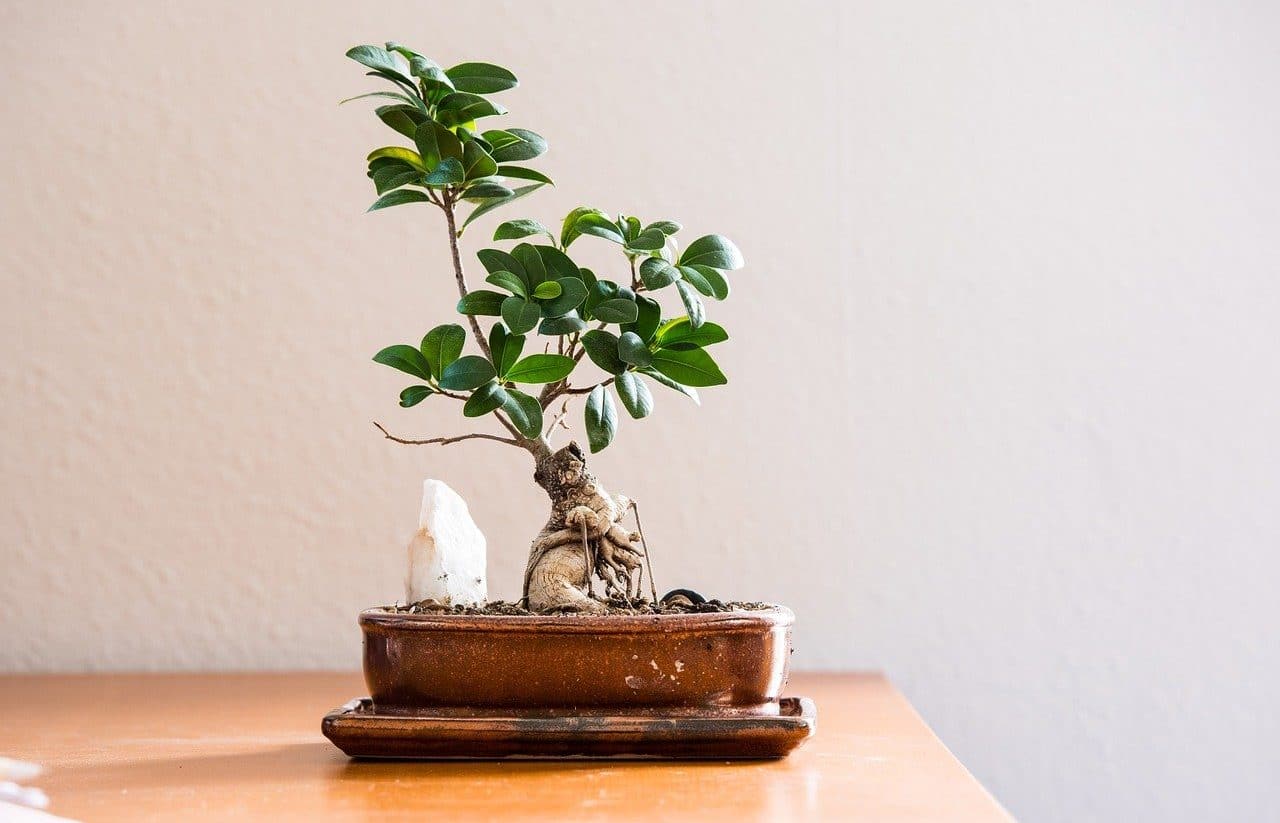
The Chinese elm (Ulmus parvifolia), the Japanese maple (Acer Palmatum) and the cedar of Lebanon (Cedrus libani) are some of the species with which bonsais are usually generated.
Bonsai is a term from the Japanese language, the result of the sum of two terms from that language: the noun bon , which is used to define a large bowl or plate; and the verb sai , which can be translated as “plant.” Hence the literal meaning of bonsai is to plant in a bowl .
The concept is used to name a plant whose growth, through various gardening procedures, is truncated . Bonsais, in this way, always maintain a small size.
Pruning, cutting roots, pinching, wiring and transplanting are some of the actions carried out to shape a bonsai. The objective of the technique is that the plant or tree, beyond its smallness, maintains the appearance of the natural specimen.
Origin of bonsai
It is believed that this type of crops emerged about 2,000 years ago in China . It was Taoist monks who began to dabble with bonsai, considering trees as symbols of the eternal. Chinese tradition stated that the person able to keep a tree in a pot managed to gain eternity.
About 800 years ago, the technique landed in Japanese territory, where little by little it became popular. In this way, bonsai trees were no longer the property of religious people and nobles and were expanded to the entire community as decorative elements.
It is important to keep in mind that a bonsai is a “normal” plant that remains small through different actions (such as pruning and cutting), but whose genetics are not modified. Therefore, with proper care, a miniature tree lives the same amount of time as a regular tree of the same species .

Growing a bonsai requires patience.
Tips for your development
Bonsai can be graded according to their style (straight trunk, inclined trunk, exposed roots, etc.) or their size (large, medium, small or miniature). Among the most important tips and care that must be taken into account when having a bonsai are the following:
- It has to be placed in a place where it receives sunlight and air and even where there may be some humidity. Hence it can be established on a terrace as well as on a balcony and a window. In winter, however, they must be protected from the cold.
- Regarding irrigation, you have to add water until all the soil is moist.
- As we mentioned above, bonsais require pruning. This is something that is done in spring and also at the end of summer.
- The most recommended time to fertilize bonsais is autumn.
- In order to get these trees to have the desired shape, you must have the appropriate tools. We are referring, above all, to the so-called bonsai scissors, which have a concave cut.
There are many celebrities who have declared themselves unconditional fans of bonsai and who enjoy taking care of them and pruning them properly. This is the case of the former president of Spain Felipe González , for example.

Having a bonsai tool kit is essential for the design and maintenance of these plants.
Bonsai diseases
Treatment of pests and diseases is essential for bonsai maintenance. These trees can be affected by various problems that threaten their subsistence.
Various insects and fungi are capable of damaging a bonsai. It cannot be omitted to mention that these miniature plants are exposed to the same pests as species that grow naturally, but they can also suffer from those that affect plants grown in pots.
In this way, the treatments applied to large plants can be used in bonsai, always with the necessary adaptations. Thus, if a chemical pesticide is used on a bonsai, a higher dilution must be used compared to the others.
Different styles
There are different styles of bonsai , differentiated according to their characteristics. The Bunjin style , for example, imitates Chinese calligraphy, while the Chokkan style seeks to maintain the straight trunk and triangular aesthetics.
The Hokidachi style , for its part, consists of generating a fan with the branches that emerge from the same place on the trunk. The Ikadabuki style , meanwhile, is based on leaving the trunk semi-buried longitudinally.
With the trunk apex positioned below the edge of the pot, the Kengai style emerges. Other bonsais have a sinuous ( Moyogi style ) or inclined ( Shakan style ) trunk. With the Yose-Ue style , a miniature forest is created with an odd number of trees.
bonsai exhibition
A bonsai exhibition is a show intended for the display of this type of plants. Each one can have its distinctive features, although they all share the particularity of being centered on miniature trees.
In some cases, owners of a bonsai collection decide to expose them to the public, either for an entrance fee or for free. A bonsai nursery can also have its display. Sometimes, they can also be seen as part of a Japanese garden .
